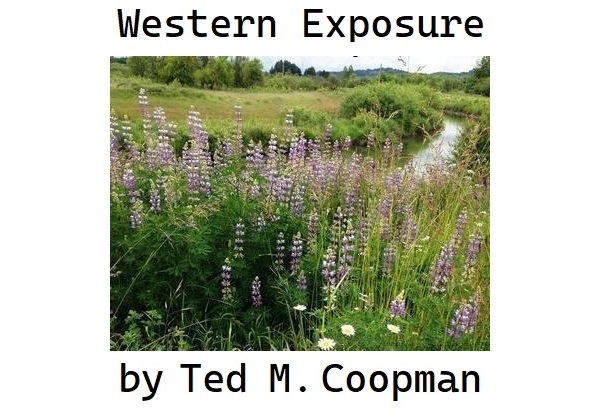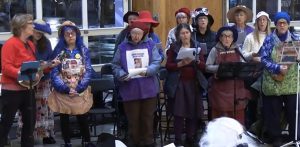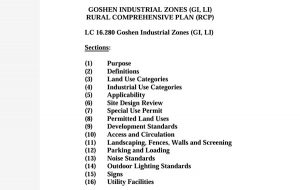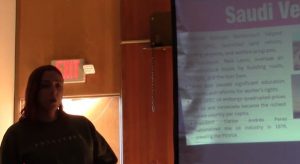Meaningful local climate action: Two paths forward
7 min read
by Ted M. Coopman
What can the city of Eugene do to take meaningful action on climate change? The city’s actions are limited by resources, regulatory power, and skeptics. However, there are two paths forward that will lead to real change and avoid time-consuming and resource-burning opposition: carbon pricing and home weatherization.
To be clear, these are not the only initiatives we can or should be pursuing, but these two are guaranteed to be effective, broadly beneficial, likely popular, and they will generate immediate, tangible results.
In “The easy part,” I explored the problem, the challenges, and the protection and expansion of our urban forest as key to climate mitigation. The next step is more complex and involves some sacrifice, but the return on investment is exceedingly high.
Everyone pays, but the return on investment is great!
Behavioral economics tells us that people respond to incentives and disincentives, which lead to behavioral changes—the sorts of changes we need to move toward decarbonizing. For example, we can raise the cost of greenhouse gas-emitting fuels and practices by putting a price on carbon. Then, we dedicate that fee to further reducing GHG emissions. When costs go up, the calculation of using those carbon-based fuels or replacing them changes.
Creating options for non-GHG appliances and fuel is incentivized because they become less expensive as GHG appliances and fuel become more expensive.
How carbon pricing works
According to the World Bank and supported by a wide variety of organizations and economists: A price on carbon helps shift the burden for the damage from GHG emissions back to those who are responsible for it and who can avoid it.
Instead of dictating who should reduce emissions where and how, a carbon price provides an economic signal to emitters, and allows them to decide to either transform their activities and lower their emissions or continue emitting and paying for their emissions. In this way, the overall environmental goal is achieved in the most flexible and least-cost way to society.
Placing an adequate price on GHG emissions is of fundamental relevance to internalize the external cost of climate change in the broadest possible range of economic decision making and in setting economic incentives for clean development. It can help to mobilize the financial investments required to stimulate clean technology and market innovation, fueling new, low-carbon drivers of economic growth.
Because it has been in the news, let’s focus on natural gas. I have talked with coffee roasters and brewers who currently need natural gas for their operations. They are as concerned as anyone about climate change, know that current practices cannot continue, and realize that switching from natural gas will cost them.
A therm of natural gas costs about $1.45. Looking at my own bill for the highest-use month, my stovetop, heating stove, and on-demand hot water used about 19 therms, which cost about $27.55 (I also have a 7.9-kilowatt solar system, robust insulation, efficient windows, and an EV).
The cost of natural gas is cheap, which means people are loath to give it up. The low cost also means that costs can increase significantly without a major impact on people’s finances.
As the recent ice storm illustrated, people see value in diversified energy sources. In my own house, the power was out and the only thing that kept us in our home and our pipes from freezing was our gas heating stove.
A climate impact fee on natural gas even as high as 10% would only add $2.70 to a monthly bill of $27. To be effective, such a fee would need to have an escalation component, so that it would increase every year toward phaseout, slowly compensating for the larger impacts of use.
While such a modest increase would be unlikely to push people into financial peril or to abandon natural gas, it will, over time, change the calculation when replacing appliances as well as the development of alternative fuel sources such as natural hydrogen.
The influence of such a fee on behavior may be small at first but will build over time. However, modest climate impact fees give people a sense they are contributing to solutions in a reasonable way.
The big payoff is what can be done with the funds from a climate impact fee.
Home weatherization: The biggest climate bang for the buck
Far and away the most effective and fastest impact on reducing GHG emissions is home weatherization. Improving efficiency with better insulation, new windows, weather stripping, and installation of heat pumps reduces GHG emissions via direct emissions from fossil fuel combustion or consumption and indirect emissions reductions from electricity generation. Home weatherization also takes pressure off a grid unprepared for full electrification. Such an effort could be expanded to include complete electrification (e.g., replacing gas stoves).

Many low-income households and more affordable rentals could use energy upgrades and the replacement of gas or outdated electrical appliances. The added value here is not only GHG reduction and lower electrical use but also improving the lives and reducing costs for low-income households. Many Eugene homes lack air conditioning. A heat pump both heats and cools and can filter air during smoke emergencies. Helping landlords improve rental housing can help keep those homes in inventory.
The benefits are immense. But wait, it gets better. The mechanism for weatherizing low-income homes already exists. Homes for Good, the Lane County housing authority, has a program in place. I have talked with the director of Homes For Good, Jacob Fox, and he is excited about the possibility of expanding the program with more funding. The fact that the administrative infrastructure exists means set-up costs would be low and the funds could be used immediately. We can start reducing GHG and energy use now.
New construction and resilience bonuses
Using incentives instead of bans can avoid costly litigation, ballot initiatives, and long delays in implementation. A simple alternative is off-setting system development charges (SDC) to change the cost calculation. If developers want to add GHG (e.g., natural gas) to a project, they would pay a climate impact fee equal to 5% of their total SDCs. If they choose to go all electric, then they get a 5% reduction on their total SDCs.
As for voluntary upgrades, such as solar power and battery back-up, improvements that have broad benefits, the city should waive permit fees. In the event of a power outage, especially longer duration outages, having a neighbor with power can create resilience hubs as well as keep people in their homes, taking pressure off emergency shelters and hotels.
Decomplexifying efforts
Eugene has a disturbing habit of overengineered and excessively complex “solutions” to problems. Complexity adds costs for compliance and increases the regulatory burden. With limited resources, we should focus our efforts on a few initiatives that have the highest impacts and generate the lowest resistance.
People usually are willing to sacrifice providing they see the sacrifice as just, equitable, and effective. Muscling through ordinances that satisfy advocates by punishing perceived “villains” with minor payoffs is a losing strategy.
Successful mobilization means demonstrating that the cause is Worthy, the proponents are Unified and Numerous, and there is a Commitment to the movement’s goals—or, as Charles Tilly called them, “WUNC displays.”
The threat of climate change is existential. We must act decisively and immediately. Yet those actions must be achievable. Our political system requires public buy-in. Engaging in the hard work of democracy involves educating the public on effective solutions that pass legal muster. The result of this engagement is reducing the likelihood of costly and time-consuming challenges.
Our small city should focus on what we can do now, with immediate multiple benefits, while our larger political system works out the more complex process of decarbonization. Our duty and priority lie in what can be done starting today.
Western Exposure is a semi-regular column that looks at issues and challenges from a West Eugene perspective – a perspective that is often ignored or trivialized by city leadership and influential groups and individuals largely based in south and east Eugene.
Western Exposure rejects the fauxgressive party line, performative politics, and “unicorn ranching” policy in favor of pragmatism focused on the daily experiences of residents and small businesses in Eugene—and West Eugene in particular.
Ted M. Coopman has been involved in neighborhood issues since 2016 as an elected board member, and now chair, of Jefferson Westside Neighbors and has 30+ years experience as an activist and community organizer. He earned a Ph.D. in Communication (University of Washington) and served on the faculty at San Jose State University from 2007 to 2020.
Ted’s research on social movements, activist use of technology, media law and policy, and online pedagogy has been published and presented internationally and he taught classes ranging from research methodology to global media systems. He and his spouse live in Jefferson Westside with an energetic coltriever and some very demanding and prolific fruit trees.
Image licensed by the author from Adobe Creative Cloud may not be reproduced or shared under the Creative Commons BY-SA 4.0 license.





